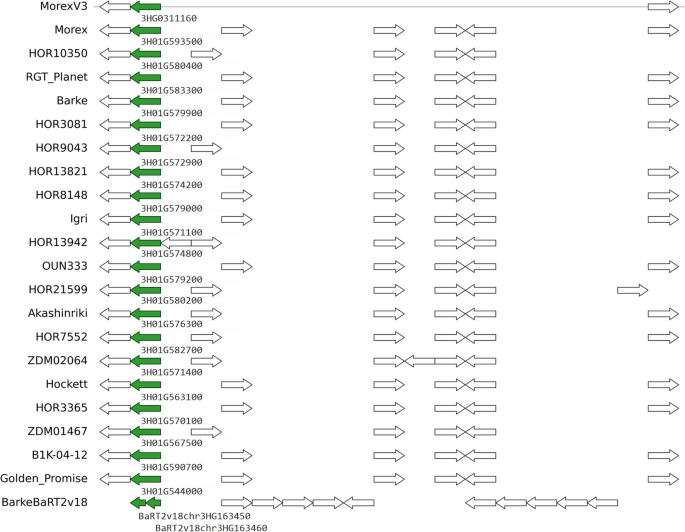Hi,
the first meeting on "Plant Genomes in a Changing Environment" kicked off today at the Wellcome Genome Campus in Hinxton, UK. It is exciting to be here and find out this is probaby the first ever plant genome meeting in an otherwise world-famous genomics venue.
I will post here my notes on the talks I attend to.
Caroline Dean, John Innes Centre, UK
She presents the different flowering habits of Arabidopsis thaliana accessions (rapid cycling, winter facultative
& obligate winter-annual) and takes us to the current knowledge of the
quantitative nature of winter recording in the FLC locus, a MADS repressor of
flowering which is the target of a polycomb-mediated epigenetic switch. In
addition, she summarizes the mutually exclusive non-coding FLC transcripts
found to be cold induced, such as COOLAIR (https://www.ncbi.nlm.nih.gov/pmc/articles/PMC4234544, https://www.nature.com/articles/ncomms13031). After flowering, the epigenome state of FLC is restored by a
demethylase. COOLAIR is actually a Brassicaceae-conserved secondary structure
RNA molecule substantially affected with a single SNP affecting splicing. She
says that this ncRNA folds and stays in place, blocking physical access to that
locus. She adds this mechanism is conserved in humans and Brassicaceae, and
would expect the same in monocots.
FLC locus accumulates H3K27me3 histones with exposure to cold, setting
up a bistable state of inducing/repressing chromatine modifications. This
balance spreads across tissues and cell populations, including the root tip.
This memory is sustained by the own chromatin in cis (https://www.ncbi.nlm.nih.gov/pmc/articles/PMC4450441).
When they looked at 80 world-wide populations they found distinct FLC
haplotypes, which compared to each other in a common background explain a
linear vernalization requirement.
Doreen Ware,
USDA and Cold Spring Harbor, USA
She talks about a maize pangenome browser currently under development. She
explains that growers require a platform that would allow easy knowledge
transfer from some plants to others, so that it can be used in breeding. She
talks about CNV genes with agronomical impact, such as transporters providing
Al tolerance (http://www.pnas.org/content/110/13/5241). She shows GRAMENE neighborhood conservation display modes based on Ensembl Compara data:
Then she describes their current efforts
PacBio-assembling 26 maize NAM parents, with SMRTlink assembly performed in the
cloud (DNAnexus) and sped up 360x. The resulting assemblies are robust, with
N50 > 34Mb.
She terminates with a quick overview of
transcriptome profiling for heterosis-inspired work, with the aim of phasing
isoforms, which is important for reconstructing heterozygous loci (https://www.nature.com/articles/ncomms11708).
Eric Schranz,
Wageningen University, The Netherlands
Talks about conservation and divergence in
relative gene order of plant and animal genomes using network-based synteny
analysis. He explains genome territories and why gene context matters with
multiple examples of Hox genes and body layout plans. He claims that we have a
genomic hairball problem when looking at synteny, and that networks with edges~synteny
can simplify the problem, allowing PAV and homeologues to be integrated easily
(https://www.sciencedirect.com/science/article/pii/S1369526616302230).
He also explains that they´re doing a mammal vs
plant synteny analysis. Overall, mammal genomes are syntenic, while plant
genomes are not. This work is under review at PNAS. They do find family
specific conserved syntenic blocks and a few, photosynthesis &
clock-related, angiosperm-conserved genes.
John Vogel, University
of California, Berkeley, USA
John talks about the pan-genome of Brachypodium distachyon and its
implications for polyploid genome evolution. He describes the main findings of
the Gordon et al paper (https://www.nature.com/articles/s41467-017-02292-8). He mentions that there is
currently no way of displaying the pangenome efficiently in phytozome, and he
looks forward to the new developments of Gramene.
He then introduces B. stacei and the resulting B.
hybridum. He shows the high synteny between B. hybridum subgenomes and the diploid parental species, as well as
the SNP-based tree suggesting at least two hybridization events. Then he shows
k-mer plots suggesting that D-citotype B.
hybridum (older) lines contain unique k-mer composition.
He then moves to the analysis of foundation
effects in the hybrids, but shows that the hybridum + parental pangenome is not
significantly different to the individual parental pangenomes. Finally, he
shows dNdS plots to show that both subgenomes are still under selection.
M Morgante
comments that this data is probably not compatible with a epigenetic shock
post-hybridization.
Jae Young Choi, New York University, USA
Jae could
not attendand was replaced by an unnamed researcher from the group. She starts
by introducing that besides transposable elements (https://www.ncbi.nlm.nih.gov/pubmed/25917896), tandem repeats are important
drivers and markers for plant diversity. The talk is actually about natural
variation in telomere repeats, which essentially are a major plant satellite, and
their correlation with flowering time. They work with 100-mers of Oryza species, which include telomeres.
In fact they see that O. sativa indica
has significantly larger telomeres than ssp. japonica, and that correlates
negatively with days to flowering.
Gabriele Magris, University of Udine, Italy
Gabriele
gave a very nice and comprehensive talk on the characterisation of the
pan-genome of Vitis vinifera using
NGS with a special focus on collinear genes that have gained or lost a neighbor
transposable element (TE) affecting their expression. My battery died and unfortunately,
I could not take proper notes. However, I recall that he show nice results on
the methylation state of the regions where TE insert and the preference of TE
families for particular genomic territories, such as LINE elements for introns
for instance. I asked him about how to efficiently annotate TEs in genomes and
he referred me to the work of Wicker (https://www.nature.com/articles/nrg2165-c2).





